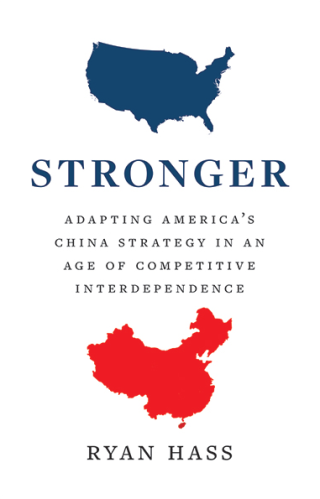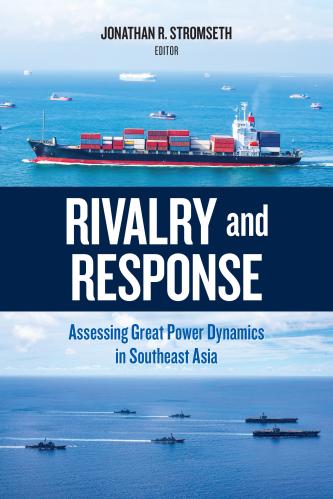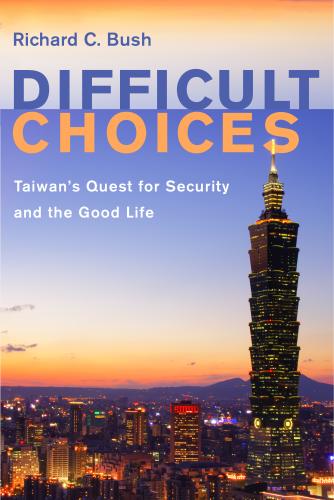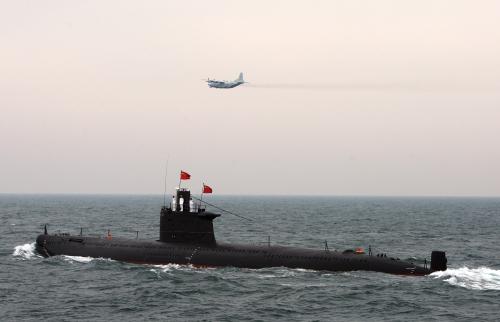Insofar as Beijing still worries about undermining its reputation for non-belligerence and galvanizing a counterbalancing coalition on its immediate periphery, its smaller neighbors will continue to wield important diplomatic and geopolitical leverage that, if well utilized, may nudge Beijing into restraining its gray zone activity at sea, Shuxian Luo writes. This piece originally appeared as a publication with the S. Rajaratnam School of International Studies.
The gray zone darkens: The continued action-reaction spiral?
Since the onset of the COVID-19 pandemic, China’s heightened sensitivity to sovereignty issues, coupled with its growing military and paramilitary capabilities and greater tolerance for risk, has likely contributed to the increased number of incidents that China has provoked in the contested maritime space in the South China Sea. The action-reaction spiral between China and the other claimants continued throughout last year and into 2022, making the gray zone darker than ever.
In March 2021, the Philippines reported that hundreds of Chinese fishing vessels, some of which were believed to belong to China’s maritime militia, swarmed the Whitsun Reef in the disputed Spratly Islands in the South China Sea. In April, with the tense face-off in the Whitsun Reef ongoing, a Filipino news crew was reportedly chased by two fast attack boats from the People’s Liberation Army Navy in the disputed waters off the coast of Palawan, marking the first time China’s naval assets were deployed to directly confront civilian ships from another claimant country. Heightened concerns about China’s behavior prompted Manila to call off the process to terminate the U.S.-Philippines Visiting Forces Agreement, which the Philippine president Rodrigo Duterte had earlier pledged to abrogate.
But the spiral did not stop there. In November, three Chinese coastguard vessels blocked and used water cannons on Philippine resupply boats headed towards the Second Thomas Shoal, which the Philippines had occupied in 1999 by intentionally grounding a naval ship and since stationed with a small military force. Notably, this incident occurred on the eve of the finalization of candidates for the 2022 Philippine presidential election. In December, the Philippines sealed a deal with India to acquire the short-range anti-ship cruise missile system BrahMos, as part of what Manila conceives as an asymmetric, denial-oriented defense strategy to counter China’s gray zone activities in the South China Sea. In April 2022, two Philippine resupply ships to the Second Thomas Shoal were reportedly blocked by Chinese coastguard and maritime militia vessels using fishing nets and buoys. The resupply was completed under close monitoring by the Chinese ships.
The Philippines is not the only claimant that has stiffened its position vis-à-vis China amid the darkened gray zone. Vietnam joined the Philippines and issued a strongly-worded statement opposing the presence of the Chinese fishing fleet in the Whitsun Reef. In June 2021, Malaysia, a claimant that traditionally tends to keep disputes with China low profile, scrambled fighter jets after detecting 16 People’s Liberation Army Air Force aircraft flying over disputed waters off its Borneo coast and summoned the Chinese ambassador to lodge a diplomatic protest — a rare strong response in the context of China-Malaysia relations.
Reputational costs and deterrence: Does Beijing still care about image?
China has clearly shifted from its traditional pattern of reactive assertiveness, becoming less reluctant to initiate incidents at sea. At the same time, Beijing seems to have in general refrained from escalating recent incidents. Unlike the Benigno Aquino era, when the China-Philippines bilateral relationship fell to its nadir and Beijing coerced Manila at will by imposing economic sanctions, freezing most of the bilateral diplomatic exchanges, and seizing control of contested land features, Beijing seems to have consistently avoided employing punitive measures against Manila in the recent incidents.
Some may speculate that a more robust U.S. posture towards the Indo-Pacific region, with a stronger commitment to multilateralism under the Biden administration, has led the Chinese decisionmakers to have second thoughts. But Beijing’s propensity to employ punitive measures against other parties seen as infringing China’s sovereignty has yet to be dampened in the past year, as evidenced in the economic sanctions imposed on Taiwan and Lithuania.
Rather, as I have argued elsewhere, China usually weighs and makes a trade-off between the potential costs of escalation and those of de-escalation when handling incidents arising from the South China Sea disputes. Robust bilateral ties between China and the rivalling claimant involved in a particular incident can increase the opportunity cost of Beijing opting for escalation.
The improved China-Philippines ties under Duterte have arguably created incentives for China’s de-escalation, even though this alone is not a strong enough factor to completely eradicate such provocations. During the Whitsun Reef faceoff, as part of an international public information campaign, Manila released photos and videos of the Chinese fleet. As embarrassment and diplomatic tension forced the incident upon Beijing’s attention, this month-long standoff ended uneventfully with the Chinese fishing vessels leaving the area. This stands in stark contrast with what happened during the Scarborough Shoal standoff in 2012, when China justified its use of coercion against the Philippines with Manila’s decision to release photos of detained Chinese fishermen.
In the Second Thomas Shoal episode in November 2021, Beijing soon modulated its posture and rhetoric and allowed Philippine replenishment, citing “humanitarian considerations.” Attributing the shift in Chinese behavior primarily to the backlash from the United States and European Union might be a bit overstated, considering Beijing’s unyielding stance vis-à-vis the West on other key issues such as Taiwan, Hong Kong, and Xinjiang. But with the Philippine presidential election (which took place in May 2022) in mind, Beijing has apparently deemed it necessary to avoid stiffening the next administration’s approach towards China, thus motivating the swift decision to de-escalate. In a speech delivered at a virtual forum held by China’s embassy in Manila in January, China’s foreign minister Wang Yi pledged that China would not use its prowess to bully its smaller neighbors over the South China Sea and urged the Philippines to continue Duterte’s China-friendly policy. After the Second Thomas Shoal episode in April 2022, in a phone call between Chinese leader Xi Jinping and Philippine President-elect Ferdinand Marcos Jr. in mid-May, Xi reiterated Beijing’s desire to maintain the positive bilateral ties with Manila built during Duterte’s tenure.
Meanwhile, facing a real and strong blowback from Malaysia on the air intrusion incident, Beijing seems to have sought to patch up ties with Kuala Lumpur and somewhat modulated, short of suspending, its activity off the Malaysian coast as of this writing. The Chinese embassy and the Chinese foreign ministry stated that the flyover was part of routine training and was not meant to target any country, calling on both sides to “continue bilateral friendly consultations.” During the first half of 2022, China appears to have dialed down its activities in Malaysia’s claimed waters and Kuala Lumpur expressly noted the absence of major Chinese intrusions.
With respect to Vietnam, Hanoi made clear first in 2014 during the Haiyang Shiyou 981 oil rig incident and again in 2019 amid the Haiyang Dizhi 8 flare-up that it was considering arbitration. While Chinese analysts have openly discussed possible countermeasures that China could take should Vietnam initiate arbitration, the prospect of another arbitration being brought against China and the high international reputational costs China risks paying seem to have contributed to Beijing’s decision in both cases to avoid further escalation. Also, in response to Hanoi’s strong statement during the Whitsun Reef standoff, Beijing issued only a brief statement through its embassy in Hanoi reiterating its position without explicitly mentioning any country by name, suggesting that China was not seeking diplomatic escalation with Vietnam over the standoff.
Going forward: A strategy of reputational deterrence
A paradigm shift has been underway in Chinese foreign and security policies since the outbreak of the global pandemic, as manifest in Beijing’s wolf-warrior diplomacy and growing propensity to initiate incidents at sea over the past couple of years. However, China’s aspiration, in the long run, remains unchanged — it wants to become not only strong and wealthy but also influential and respected on the world stage, as my Brookings colleague Ryan Hass observes. Insofar as Beijing still worries about undermining its reputation for non-belligerence and galvanizing a counterbalancing coalition on its immediate periphery, its smaller neighbors will continue to wield important diplomatic and geopolitical leverage that, if well utilized, may nudge Beijing into restraining its gray zone activity at sea.
For claimant countries, they need to walk a fine line between responding to China’s growing gray zone activity by developing asymmetric, denial-oriented defense capabilities on one hand and maintaining overall stable, positive bilateral ties with Beijing on the other. These are the two sides of the same coin that could help stabilize the South China Sea by raising Beijing’s potential costs of escalation. Notably, now in light of the war in Ukraine, the delivery of the BrahMos — which India produces jointly with Russia — might be jeopardized by the Western-imposed sanctions on Russia. This will leave the Philippines in a position of having to choose to either wait and see, or consider hosting U.S. maritime strike missiles. Manila needs to communicate to Beijing clearly that it would not be in China’s interest to keep up its gray zone pressure and eventually press Manila into hosting U.S. missiles.
For other players in the region, especially the Association of Southeast Asian Nations (ASEAN), as I argued in an earlier piece, a concerted, proactive approach that leverages their unique normative and collective bargaining power with Beijing can add further weight to the reputational deterrence against China’s gray zone pressure.
For Washington, in implementing its Indo-Pacific strategy, it needs to move beyond a singular focus on major powers and empower smaller stakeholders in the region with the objective of increasing the latter’s resilience vis-à-vis Beijing without pressing them to choose sides. Beijing’s cost-benefit calculation regarding the South China Sea is as much conditioned by America’s broad strategy as by how smaller stakeholders in the neighborhood respond and can respond to China’s behavior. Ignoring this and leaning heavily on security-centric minilateral groupings may turn out to be counterproductive by marginalizing ASEAN and thus undercutting the organization’s unique leverage with Beijing.










Commentary
Op-edProvocation without escalation: Coping with a darker gray zone
Monday, June 20, 2022